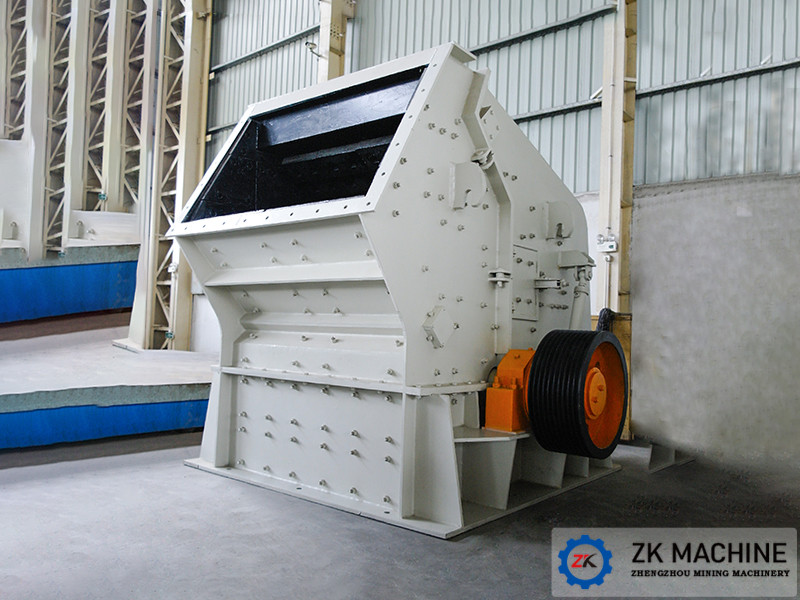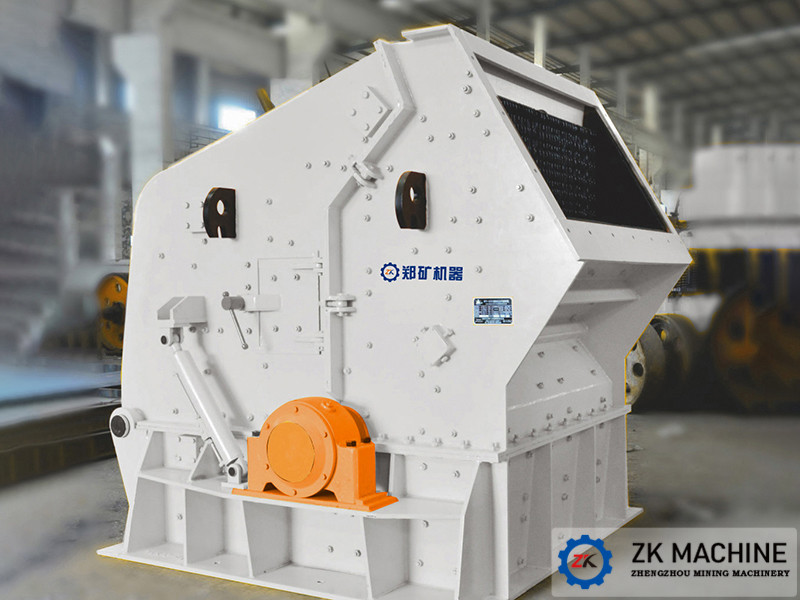The impact crusher is mainly composed of a rotor, a hammer, a first counterattack plate, a second counterattack plate, a tie rod and a body that suspend the counterattack plate. The hammer and rotor are rigidly connected.
(1) Rotor
The rotor structure of impact crusher has three types: integral, combined and welded.
The rotor of the impact crusher must have sufficient quality to meet the needs of crushing large materials. The rotor of the crusher mostly adopts an integral cast steel structure. This rotor has a large rotational inertia, is durable, and is easy to place the plate hammer, which can meet the requirements of the crushing work. The steel plate welding structure can also be used for small impact crushers. This rotor is easy to manufacture and easy to balance, but has poor strength and durability.

(2) Hammer
The hammer of the impact crusher is fixed on the rotor. It is an important part of the crusher. It needs to be firmly installed and easy to replace. It is made of materials with good impact resistance. High manganese steel, medium carbon alloy steel and bearings are mostly used in China. Steel forging. Some manufacturers use a welding rod to build up a layer on a carbon steel plate hammer, or a high-manganese steel electrode to build up a layer of metal material on a high-strength steel hammer.
The geometry of the bar hammer has an impact on the production capacity and service life of the crusher. The long bar hammer is commonly used. There are many ways to install the bar hammer, and the structure of the bar bar hammer is currently used more. But it is fixed with bolts, because the bolts are easily damaged when exposed to the outside, and the service life is short. Some hammers are inserted and fixed on the rotor. After the hammer is worn, it can be turned around to save steel. However, this structure has strict requirements on manufacturing dimensions, otherwise it will cause difficulties in disassembly and assembly. A hammer composed of a guard plate and a strike plate. The structure is fixed by a wedge, no bolts are exposed on the surface of the strike plate, and only the protection plate needs to be drawn after being worn. This kind of structure is complex and only suitable for large impact crushers. Wrenches fixed with wedges and jacking screws. When the top wire is tightened, the hammer can be pushed outwards and wedged tightly with the inclined surface of the wedge block. When the rotor rotates, under the action of centrifugal force, the hammer and wedge will turn more and more tightly. This structure has a simple structure, is easy to repair and replace, and works reliably.

(3) Counterattack board
The work of the counterattack plate is to withstand the impact and crushing of the material struck by the hammer, and rebound the crushed material back to the crushing area to crush again. The shape and structure of the impact plate have a great influence on the crushing efficiency.
There are many forms of counterattacks, mainly in the form of polylines and arcs. The broken-line counterattack plate has a simple structure, but it cannot guarantee the most effective impact of the material. After the arc-shaped counterattack plate can make the material block rebound from the counterattack plate, it forms a fierce collision and breaks at the center of the circle, and its crushing effect is high.
The counterattack plate is currently made of high manganese steel and other materials resistant to impact wear.





















